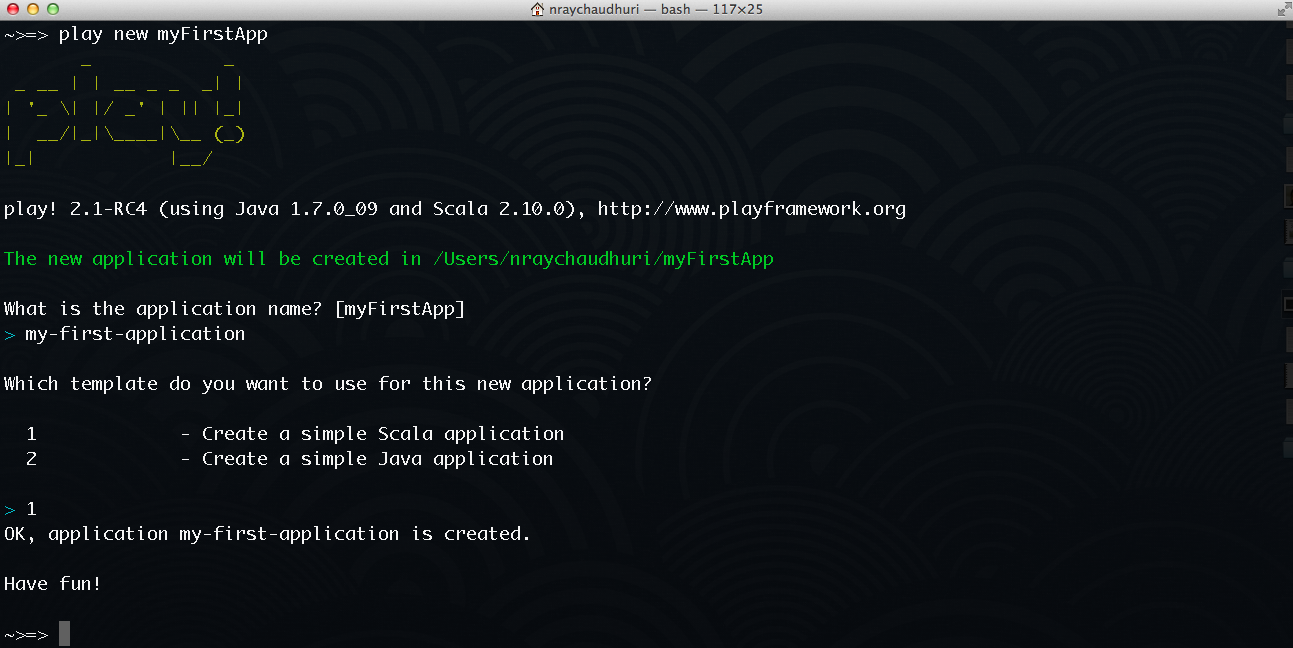Creating a new application with play
Create a new application with the play command
The easiest way to create a new application is to use theplay new command.$ play new myFirstApp- The application name (just for display, this name will be used later in several messages).
- The template to use for this application. You can choose either a default Scala application or a default Java application.
Note that choosing a template at this point does not imply that you can’t change language later. For example, you can create a new application using the default Java application template and start adding Scala code whenever you like.
Create a new application without having Play installed
You can also create a new Play application without installing Play, by using sbt.
First install sbt if needed.
Just create a new directory for your new application and configure your sbt build script with two additions.
In
project/plugins.sbt, add:// The Typesafe repository
resolvers += "Typesafe repository" at "http://repo.typesafe.com/typesafe/releases/"
// Use the Play sbt plugin for Play projects
addSbtPlugin("play" % "sbt-plugin" % "2.1.0")
Be sure to replace
2.1.0
here by the exact version you want to use. If you want to use a
snapshot version, you will have to specify this additional resolver: // Typesafe snapshots
resolvers += "Typesafe Snapshots" at "http://repo.typesafe.com/typesafe/snapshots/"
In
project/Build.scala:import sbt._
import Keys._
import play.Project._
object ApplicationBuild extends Build {
val appName = "My first application"
val appVersion = "1.0"
val appDependencies = Nil
val main = play.Project(
appName, appVersion, appDependencies
)
}
You can then launch the sbt console in this directory:
$ cd myFirstApp
$ sbt
sbt will load your project and fetch the dependencies.
Once the application has been created you can use the
play command again to enter the Play console .$ cd myFirstApp
$ play
Comments
Post a Comment